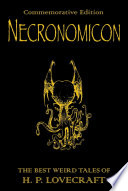-
-
I made a thing. Now what?
Anyone who knows me knows I'm all about solving problems. That's my thing. There's a problem, here are the facts, here's the solution. It's almost always a technical solution.
So when I was presented with the problem of making it easier to make background music for YouTube videos, I built Harmonious Studio.
Technically, its a good solution – it lets you mix individual loopable instruments into a single track. Behind the scenes, it uses a the Web Audio API to manage the individual tracks in the browser and ffmpeg to prepare the final high-quality download.
The question is: what now?
The original plan was to allow others to upload their tracks and create a marketplace for music – basically positioning Harmonious Studio as "Shutterstock for Music". There are several options for this – monthly subscription for unlimited downloads, fee per premium track, fee per download.
There are a few problems with this, however.
1. Free is better
There is a huge amount of free music available online. Every week there's a post on /r/gamedev where a composer gives away thousands of tracks for free. The majority of responses I got from the feedback form I asked for on Harmonious fell into the segment "Yes, I use background music. No, I'd never pay for it".
2. Good enough is good enough
The idea was that content creators would be able to make music to fit their content exactly. However, getting something instantly for free that almost fits is preferable to making something custom that costs time and money. Kind of obvious when you think about it.
3. If it works, keep it
The other piece of feedback I got from YouTubers was that, once they've found a piece of music that works, they're more likely to copy-paste it into the next video than get a new one. Once they've got 3 or 4 'go-to' tracks, they've got everything they need for most kinds of videos.
So... what now?
It's a good technical solution to a problem without a good market. This is usually the point where the insightful entrepreneur pivots and relaunches using the tech in a completely new way. Anyone have any suggestions about how to do that?
-
Harmonious Studio

Some of you might know that my wonderful other half reviews a lot of books on Youtube and that I occasionally make music. So I, naturally, help her on the videos by providing background music for her videos.
After a couple of months of re-recording or remixing existing tracks, I realised the key was that – as a content creator – she wanted to have more control over the music in her videos than just picking one of my existing instrumentals. It occurred to me that not everyone that makes videos, games or podcasts has access to a musician with recording equipment but might want the same kind of control over their music.
There are plenty of royalty-free music sites around but a lot of them suffer from the problem that there are 20,000+ tracks to choose from and you might need to go through a few thousand of them to find the right track.
To solve this, I built my latest project: Harmonious Studio.
A 'set' is a collection of individual tracks built around a single basic loop. To create your individual mix, you pick a set, switch tracks on or off and download a loopable piece of music that can be dragged into whatever you use to create your videos or podcasts. All the tracks in a set work together but different combinations can change a piece from light and happy to dramatic and angry to wistful and relaxed.
Here are a few examples of mixes built from the same set:
For Game Makers
I'm also hoping this is useful for game developers. Fundamentally, it's a way to create lots of variations of music that go well together – some dramatic, some calm, some exciting – these variations can be tied to metrics and areas in a game and smoothly and transparently change with the game's mood and atmosphere.
For musicians
The next phase is to open up the platform to other musicians to enable them to add tracks to an existing set or create an entirely new set.
For now, all tracks are licensed for free under CC-by 4.0 but, if it turns out to be useful, musicians will be able to offer their tracks for sale. Those buying the track will pay a single fee for the mix and the fee will be split between the artists who created the tracks in the mix.
If you're a content creator, know a content creator, have ever thought about being a content creator or even have simply read this far in this post, please check it out and give me some feedback.
-
HERE Tracking
You'll have noticed I haven't updated much recently. Even when I did, if was with distinctly non-tech stuff. The reason being I've been busy. Not "I've got a big to-do list" busy or "I've had a couple of browser tabs open for a few weeks that I'll get round to eventually" busy, either. I've got a text-file to-do list that's been open, unsaved in the background since January 2017 and there are a couple of background tabs I've been meaning to get round to reading since late 2014. Really.
What's been keeping me busy?
Easy answer: HERE Tracking.
A couple of years back, a few of us got interested in how IoT devices could work with location. What's the smallest, simplest device we can connect to the cloud and pin point on a map? Within a few weeks, we had a basic cloud and at CES in January this year, we launched a fully-fledged product. In that time, I've moved from 'prototyper who built version 0.1 on his laptop during the Christmas holidays' to something roughly equivalent to CTO of a medium-sized tech company. Not bad.
What's it do?
In essence, a small IoT device with some combination of GSM, WiFi and Bluetooth does a scan to find out what wireless networks, Bluetooth beacons and cell towers are visible and how strong they appear. They send their scan to HERE Tracking where it gets resolved into a latitude/longitude and then saved. The best bit is that it works indoors and outdoors.
Look, we've even got our own shiny video with cheesy voiceover!
And another that shows what it actually does!
There are a bunch of other features as well such as geofences, notifications, filtering, etc. but the main focus is this large-scale ingestion and storage of data.
At this point, our original Tracking team has grown to include HERE Positioning (the clever people who actually figure out where the devices are) and HERE Venues (we recently acquired Micello). By combining, the Tracking, Positioning and Venues bits together, we can follow one of these devices from one factory, across the country on a truck or train, overseas, into another country, into another factory, out into a shop... and so on.
-
HTTP Status Codes: The Album






